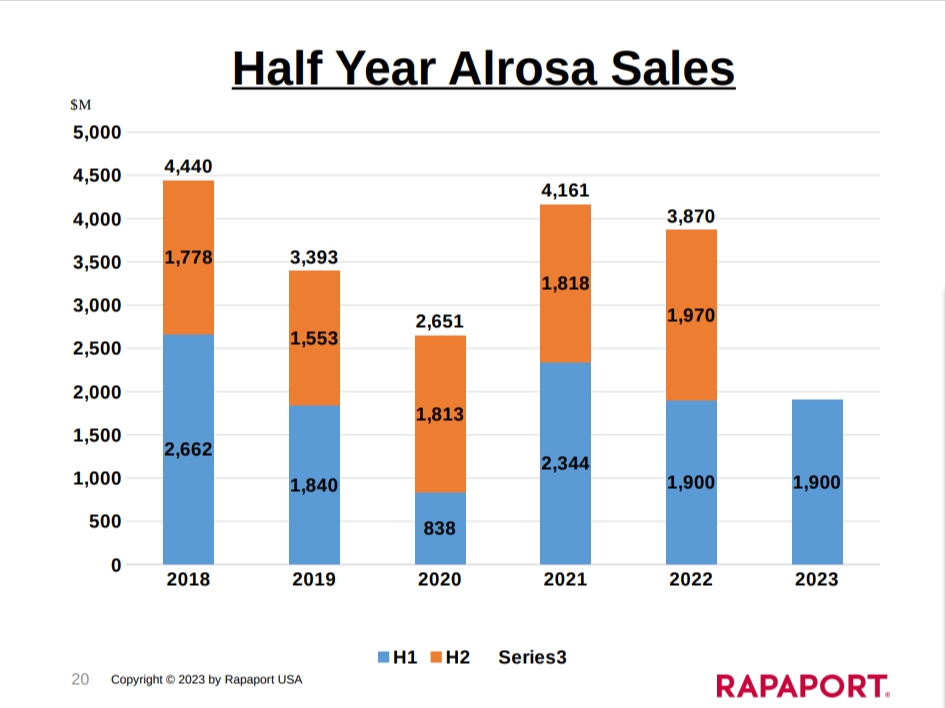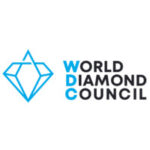When most of us think of “Government Sanctions,” we imagine complex legislative processes beyond our understanding and influence. Therefore, we don‘t usually pay attention.
Nevertheless, when it comes to Sanctions on Russian diamonds, it’s critical that members of the trade become more educated ASAP. Our industry is under immediate threat, ethically and economically.
Our goal is to share knowledge. If you are concerned by what you learn, unite with us and other members of our trade to take action. Together, we can make sure that Russian diamond sanctions don’t destroy our industry.
Our coverage begins with sanctions related to Russia’s invasion of Ukraine. Other US sanction issues are not covered here.
We will tell the Russian Sanction story in parts. Some of what we disclose may be painful, especially to trade organizations that are being manipulated. We will also provide an extensive list of important documents that provide insight into how positions have developed. Our communications with the United States Jewelry Council (USJC) are particularly enlightening.
This “What You Need To Know About Sanctions” section is a work in progress and will be updated regularly. We encourage you to share your views and comments via email to [email protected].
On March 11, 2022, US President Bident issued an executive order related to non-industrial diamonds:
Section 1. (a) The following are prohibited: (i) … non-industrial diamonds; and any other products of Russian Federation origin …
The President’s executive order used the term “origin,” which effectively exempted sanctions against Alrosa diamonds that were “substantially transformed” (i.e. polished) outside of Russia. Once Alrosa’s rough diamonds were polished in India, their “origin” was changed to Indian, and they could be freely imported into the US.
Alrosa’s rough diamonds found their way from Russia to India and from India to the US. The money went the other way from the US to India and from India to Russia.
Alrosa’s sales did not decline. They sold $1.9 Billion of diamonds in the first half of 2023, the same amount as the first half of 2022. The President’s executive order did nothing to stop the flow of money to Russia.

Why did President Biden issue an ineffective executive order? Didn’t he know that almost all Alrosa rough diamonds were cut outside of Russia? Was the President uninformed or misinformed? Was his order made only for optics, knowing full well that it would have no effect on Russia’s diamond revenues? What role did the US Department of State play in this?
Frankly, I believe the President of the United States knows what he is doing. It is the State Department’s job to play with optics. Fake sanctions are just one of their tricks.
For example, the US State Department put sanctions on Zimbabwe miners and then voted to elect Zimbabwe as the Chair of the Kimberley Process. Such double talk is standard operating procedure for the State Department as their job is to represent the interests of the US government. President Biden needs India, a nuclear power, to balance US interests against China, and India wants to continue selling polished diamonds sourced from Alrosato the US. Who are we to disagree with the President? In a national security framework, diamonds are unimportant. The one thing we might ask is that the President and his State Department stop playing optics with our industry.
In fact, following President Biden’s executive order, on April 1, 2022, eleven members of Congress sent a letter to the Secretaries of State and Treasury complaining about the “major loophole.” Then on April 7, 2022, the US Office of Foreign Assets (OFAC) woke up.
The OFAC designation of Alrosa following the President’s executive order was supposedly a big deal. OFAC issued a press release and the State Department got everyone excited. In fact, however, it was just more optics and did not stop the movement of diamond revenue from the US to Russia.
The major question facing the diamond trade following the OFAC designation was whether-or-not the new OFAC sanctions closed the “major loophole.” Was it still legal to buy “Russian Source” diamonds that were purchased from Alrosa but polished outside of Russia? Could these “Russian Source” diamonds be imported into the US? Did OFAC close the “origin” loophole?
On April 26, 2022, at the American Gem Society (AGC) conclave in Oklahoma City, the Jewelers Vigilance Committee (JVC), a well-respected trade organization, called the situation “murky.” They went on to say: “Under current regulations, it is not legal to buy rough or polished diamonds directly from Russia. However, if those diamonds have been ‘substantially transformed’ elsewhere – including India, where most diamonds are cut – they are still legal to import.”
So the JVC, the well-respected US trade organization, that is “Upholding Jewelry Industry Ethics and Integrity,” told the AGS, “a nonprofit trade association of fine jewelry professionals dedicated to setting, maintaining and promoting the highest standards of ethical conduct and professional behavior,” that it’s legal to buy Russian diamonds, if they have been cut outside of Russia. Obviously, everyone understood that the US money went to Alrosa and Russia’s war effort, but no one wanted to talk about that.
To be fair, you can’t blame the JVC for communicating their honest opinion of the law or the AGS for following the law. It was a competitive market and business was good in 2022, thanks to the US government subsidies. The diamonds flowed, the money flowed, and the Russian bombs flowed. No one was to blame. Everyone was happy, except, of course, the Ukrainians.
The big brands and some ethical jewelers stepped in with announcements that they would not buy Russian goods, and this influenced the supply chain making fine quality Russian diamonds cheaper. RapNet restricted Russian goods from its’ trading network, but others did not.
Independent jewelers who refused to buy Russian goods, were appreciated by socially conscious consumers, but they faced stiff competition from others selling Russian goods at lower prices. There was no ethical level playing field, just government sponsored optics. Ineffective, dishonest, misrepresented government regulations made it look like there were effective Russian sanctions.
What was going on didn’t look right to us. The OFAC document did not include the word ‘origin’ anywhere. In spite of the JVC position, it made no sense that OFAC-sanctioned entities could avoid sanctions by transforming their products.
So on February 28, 2023, Rapaport wrote a letter to OFAC requesting clarification of the following two points:
Is it permissible for a US entity to trade or import into the United States, polished diamonds manufactured from rough diamonds purchased from Alrosa after April 7, 2022, whereby the diamonds were manufactured or “substantially transformed” outside of Russia by non-sanctioned entities?
Does “substantial transformation” of a product purchased from a “sanctioned entity” render the resultant product free of sanction restrictions?
Unfortunately to date OFAC has refused to answer our questions. What can they say? If they say Russian Source diamonds can’t be imported into the US, President Biden will have a problem with India. If they say you can import Russian Source diamonds, how will the administration justify support for Ukraine in Congress and their relationship with the G7 countries, which they expect to increase sanctions on Russian oil. The State Department will lose their optical illusion if OFAC replies. The goal of the State Department is to continue the illusion that Russian diamonds are sanctioned while continuing to allow their importation from India. They want fake sanctions.
Shockingly, The US Jewelry Council (USJC) refuses to support our efforts to get an answer from OFAC. On September 21, 2023, David Bonaparte, CEO of Jewelers of America (JA), responding to Rapaport for the USJC Board wrote “Respectfully, we do not believe that your proposed letter to OFAC will provide any further clarity.” It appears the USJC is relying on the JVC position that Russian Source diamonds are perfectly legal.
We have also reached out to the JVC, who is also a member of the USJC and acts as an advocate for the jewelry trade with the US government. They too have not reached out to OFAC for clarification.
The Rapaport view is that it is unethical for the US government and the US trade to buy Russian diamonds. It is even more unethical to dishonestly misrepresent our trade to consumers with fake sanctions.
The fact that US money is going to Alrosa, and Ukrainians are dying does not seem to bother the JVC, AGS, JA, or the other members of the USJC. At this stage none of the USJC members support our request for clarity from OFAC. The lack of a level ethical playing field does not seem to bother any of these trade organizations.
So we are going to you – the people. It is our intention to reach out to our thousands of US Rapaport members and their congressional representatives to force an answer from OFAC. Hopefully, this will provide an opportunity for a more honest and transparent diamond industry.

September 1, 2023
In October 2023, the World Diamond Council (WDC) circulated its WDC G7 Diamond Protocol, which allows for the US importation of “Russian Source” diamonds that have been purchased from Alrosa. This is contrary to the stated purpose of the G7 initiative, as it allows for the continued funding of Russia’s war efforts through the sale of diamonds to the US and other G7 countries.
On May 19, 2023, the G7 nations, which include the US, issued the following statement:
“In order to reduce the revenues that Russia extracts from the export of diamonds, we will continue to work closely together to restrict the trade in and use of diamonds mined, processed, or produced in Russia and engage with key partners with the aim of ensuring implementation of future coordinated restrictive measures, including through tracing technologies.”
The WDC G7 Diamond Protocol Standard requires the following statement on all invoices:
The rough and/or polished diamonds herein invoiced do not originate from mining companies operating in Russia and have not been processed or produced in Russia … etc.
The cynical replacement of the word “and” instead of “or” means that only diamonds that have been mined AND processed or produced in Russia are declared. Other “Russian Source” diamonds that have been mined in Russia but processed or produced outside of Russia are not included in the WDC declaration and, according to the WDC G7 Protocol, may be freely imported into the US.
We have major objections and serious concerns about the WDC G7 Diamond Protocol and urge all honest, ethical and decent members of the trade to resign from the WDC.
We encourage you to read Part 2 of Russian Sanctions Story, which will be published shortly.
As always your comments and suggestion are most welcome. Please email [email protected]

October 2023
Dear Friends – Our trade is in a dangerous situation as the WDC, and their self-interested parties’ attempt to control our freely competitive US markets for their benefit. Please support the Rapaport US Diamond Protocol. It is an honest and ethical way to eliminate the US trade in Russian diamonds without damaging our US market.